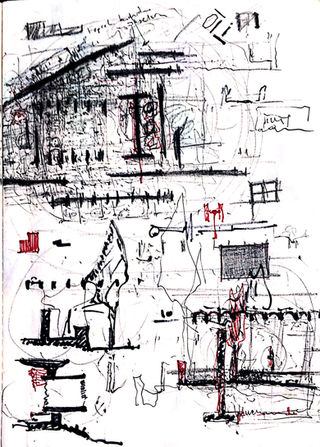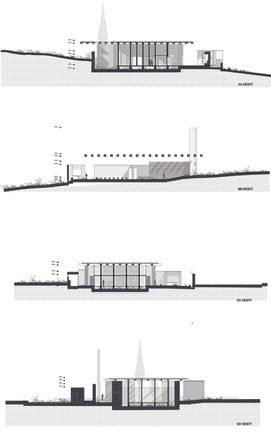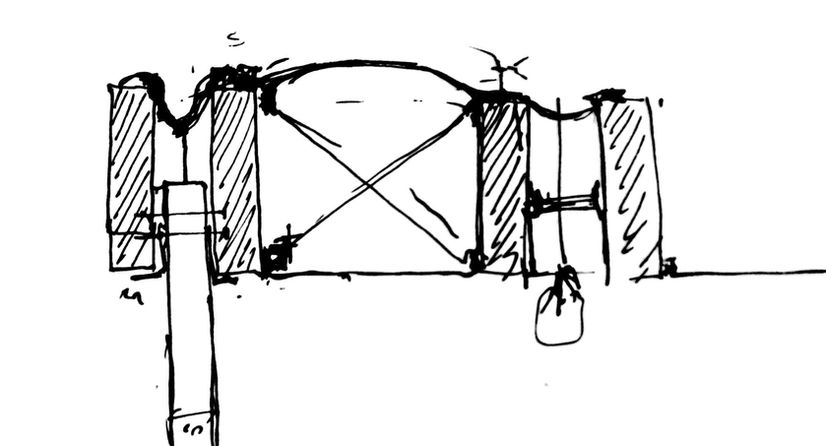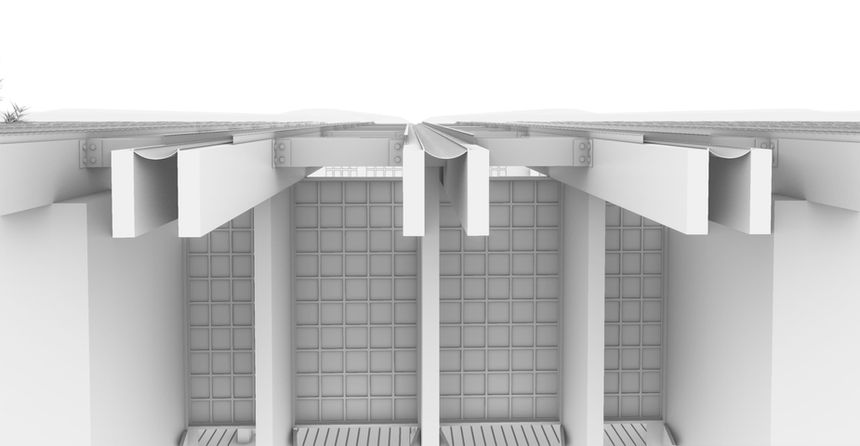Get in touch with us at info@atelierbirches.com
Mescit
Project Type: Architecture, Religious Architecture, Community Worship Space.
Location: Gaziantep
Scale: 300 m2
Year: 2019
Client: T.C. Ministry of Environment, Urbanisation and Climate Change
The Earth as Mescid
- A Mescit Within the Everyday
Introduction, Questions, Reflections
Can a place of worship be conceived independently of the ground it stands on—of the human, of life itself?
When representations and replicas are stripped from their social context and reproduced without grounding, they are often rendered untouchable through an assumed sanctity. Such untouchability, cloaked in the sacred, hinders our ability to grasp the actual relationships between places of worship and the everyday life in which they are embedded. One could say this is not simply about sanctifying a divine order, but about sanctifying a specific social arrangement believed to be part of that divine order.
Can we imagine a place of worship rooted in the relationships between human existence, the earth, and daily life?
Worship, Interior Life, and Meaning
Human existence is bound to the effort to understand, make sense of, and dwell in the world. For the believer, this means making the earth a place of prostration, a mescit.
The simple gesture of turning toward the qibla holds a profound internal power. But is this spiritual force not often flattened by layers of representational and symbolic excess?
The act of standing shoulder to shoulder in prayer, filling the void with presence, reveals that prayer is as much spatial and collective as it is spiritual. It is, at its core, about inhabiting the earth and sharing it with others.
Mescit, Everyday Life, and Spatial Closeness
A mosque is not only a place for collective prayer but also a space for collective presence, for being together, socially and spatially.
So what really distinguishes a mosque from a mescit?
Certainly not size alone. One could say, with due subtlety, that a mescit is not a place we go to, but one we return to. It is not designed for spectacle, but for grounding.
To treat mosques or mescits as mere places of prayer is to insert a distance between the deeply personal act of worship and the fabric of daily life. A space detached from the everyday, stripped of its human rhythms, is not truly a mescit or a mosque. At most, it becomes a "temple", a product of separation, where the sacred is constructed in opposition to the worldly.
The notion of the temple, in this sense, is about sharpening the divide between the spiritual and the mundane and creating distance between the human and the divine through form and mysticism.
Yet in a world where places of worship once shaped everyday life, should we not now ask whether they can once again play a generative, transformative role in shaping life around them?
If "the earth has been made a mescit," then what are the spatial implications of this statement? Can we imagine a place of worship that moves beyond the symbolic and untouchable, toward something inhabited, open, and intertwined with daily life?
Design, Experimentation, Observation
This project is an experiment in spatial intimacy: a mescit embedded within a public park, surrounded by the flows of everyday life.
It deliberately avoids the formal hierarchies of the traditional mosque, from the mihrab to the courtyard, from ablution to the minaret. These layers are loosened. Instead of sanctifying fixed social orders, the design embraces the temporality of social life, its rhythms, interruptions, and informalities.
The mescit becomes a vessel for inner stillness, not through isolation, but through integration. It is not an object set apart, but a tectonic clearing, a space carved within, not erected above.
Fragments of structure spill gently into the park. The sloped terrain is not overcome, but inhabited. The earth itself becomes the platform for worship and gathering.
While the inner core of the mescit offers a space of prayer, the design extends outward, into a network of everyday uses. It opens up to the park not as an edge but as a continuity.
The architecture is composed of excavated walls, thicknesses, niches, and the interstices they create. Around the central prayer space, tectonic fragments hover ambiguously between being part of the park or the mescit, blurring that very distinction.
In section, the building resolves into a sheltering eave that hovers over the core, constructing a quiet, minimal image of itself.
The transition from outside to inside avoids theatricality. Light is not mystified; instead, it follows the body, shifting gently as one enters. The sacred is not imposed, it is allowed to emerge.
The mescit becomes a space where light spills through cast-glass vaults like falling water, where the sacred is not a spectacle, but a quiet, tectonic breath within the park.

Site Plan

Spatial Details


Ground Plan













































